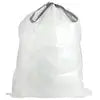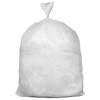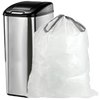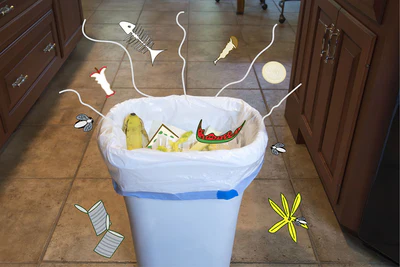Now that we’re deep into the middle of fall, many of your outdoor chores are probably winding down. In many places, the lawn has stopped growing, and the mower is safely stored in the shed. The vegetable garden is emptying out, except for any stray pumpkins that survived Halloween. Chances are, you’ve completed your big fall yard cleanup for the year. But there’s one important job that kicks into high gear as the season turns: composting.
Autumn is a great time of year to gather materials to beef up your compost pile. Keeping the compost cooking through the winter months is the best recipe for a vibrant garden once spring rolls back around. Those piles of leaves that you’ve so carefully raked off your lawn and drive are a wonderful addition to your compost.
- First of all, those leaves are stuffed full of important trace minerals that can feed your plants. Pound for pound, they have about twice the minerals you’ll find in manure! The tree’s roots have already done the hard work of pulling nutrients up from deep in the ground into those leaves, so don’t let them go to waste!
- A healthy compost pile needs a proper balance of carbon and nitrogen (more on this later.) Leaves are a wonderful source of carbon-based materials, and so are many of the other autumn leftovers you’ll find around the yard: hedge trimmings, old vines, dried vegetable plants from the garden, straw.
Compost piles are a bit like Goldilocks: they need conditions to be “just right” Composting works because decomposing materials generate heat, which kills off weed seeds and parasites, and makes waste break down faster. But the temperature needs to be correct: too low and the pile just sits there, too hot, and the necessary microorganisms die. Similarly, you don’t want your pile to be too dry (no composting will happen) or too wet (it will rot and stink). There are a few things you can do to help.
- Start your pile either on bare earth or with a layer of twigs or straw.
- At the beginning, a few shovelfuls of manure or other nutrient-rich “starter” material can really get things going.
- Get your ratio of carbon-rich brown materials (leaves, twigs, straw) to nitrogen-rich green materials (food scraps, fresh clippings) right: a good rule of thumb is ⅔ brown to ⅓ green. This is where all those leaves will come in handy!
- Add materials in layers like a compost lasagne: a layer of brown, a layer of green, a layer of brown, a layer of manure.
- Turn your pile often: aeration is a vital step to keep everything breaking down evenly and well, and to keep the pile from developing troublesome “hotspots” or “dead spots”
- Consider enclosing your pile in a bin to make containing and managing it easier.
- If the pile looks very dry, give it a sprinkle with the watering can (don’t soak it!) if you’re getting a lot of rain, consider protecting the pile with a tarp or loosely fitting lid (this can also help maintain a good temperature.
If you’ve been feeding your compost pile lots of leaves and still have some left over, you can try making leaf mold: it’s similar to compost but without added nitrogen. It’s full of nutrients and very water absorbent, making it an invaluable addition to heavy or rocky soil. It takes about 3 years for a pile of leaves to decompose naturally into leaf mold, but you can speed up the process: finely shred your leaves, add a bit of water, and stuff them into landscaping bags which have been poked full of air holes. Turn the bags over a few times during the winter months, and you could have gorgeous leaf mold within 6 to 12 months.
We’re happy to sing the praises of compost all day long. Most importantly, composting keeps waste of landfills while it enriches the soil and encourages the beneficial organisms that hold up every healthy ecosystem. Starting your own compost pile is one of the easiest ways to help the environment, and it can be done inexpensively or even for free. While Mother Nature may seem like she’s winding down right now, fall is no time to neglect your garden. There’s so much you can be doing behind the scenes to plan your garden for next spring.
 4.9 out of 5
4.9 out of 5  Save 20% Off Sitewide - Discount in cart.
Save 20% Off Sitewide - Discount in cart.















































